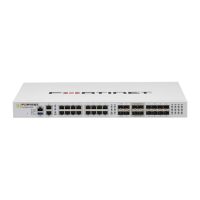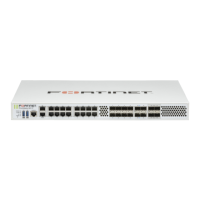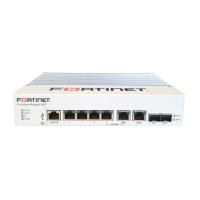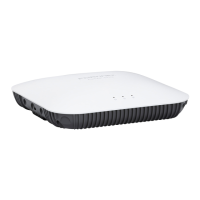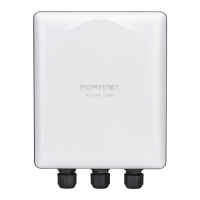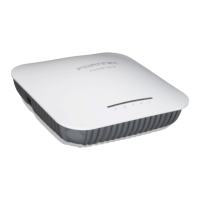6DIHW\&DXWLRQVDQG:DUQLQJV
Rack mount instructions:
Elevated Operating Ambient - If installed in a closed or multi-unit rack assembly, the operating ambient temperature of the rack environment may be greater than room
BNCJFOU5IFSFGPSFDPOTJEFSBUJPOTIPVMECFHJWFOUPJOTUBMMJOHUIFFRVJQNFOUJOBOFOWJSPONFOUDPNQBUJCMFXJUIUIFNBYJNVNBNCJFOUUFNQFSBUVSF5NBTQFDJmFECZ
the manufacturer.
Température ambiante élevée – En fonctionnement, si l’installation est réalisée dans une baie fermée ou que cette baie stocke un nombre important de machines, la
température ambiante peut être supérieure à la température de la pièce. Par conséquent, il est important d’installer le matériel dans un environnement respectant la
température ambiante maximale (Tma) stipulée par le fabricant.
Reduced Air Flow -*OTUBMMBUJPOPGUIFFRVJQNFOUJOBSBDLTIPVMECFTVDIUIBUUIFBNPVOUPGBJSnPXSFRVJSFEGPSTBGFPQFSBUJPOPGUIFFRVJQNFOUJTOPUDPNQSPNJTFE
Ventilation réduite – L’installation du matériel dans la baie doit être exécuté de manière à ne pas compromettre la ventilation nécessaire au fonctionnement traditionnel
de la machine.
Mechanical Loading - Mounting of the equipment in the rack should be such that a hazardous condition is not achieved due to uneven mechanical loading.
Branchement – L’installation du matériel à l’intérieur de la baie doit être effectué de façon à éviter toute situation dangereuse liée à un branchement non conforme.
Circuit Overloading - Consideration should be given to the connection of the equipment to the supply circuit and the effect that overloading of the circuits might have
on overcurrent protection and supply wiring. Appropriate consideration of equipment nameplate ratings should be used when addressing this concern.
Surtension – Il convient de prendre l’ensemble des précautions nécessaires lors du branchement du matériel au circuit d’alimentation et être particulièrement attentif
aux effets de la suralimentation sur le dispositif assurant une protection contre les courts-circuits et le câblage. Ainsi, il est recommandé de tenir compte du numéro
EJEFOUJmDBUJPOEVNBUÏSJFM
Reliable Earthing - Reliable earthing of rack-mounted equipment should be maintained. Particular attention should be given to supply connections other than direct
connections to the branch circuit (e.g. use of power strips).
Mise à la terre – Lorsque le matériel est connecté par la terre il doit être protégée. Veillez tout particulièrement aux branchements électriques autres que les
branchements directs au circuit de dérivation (ex: utilisation de multiprises).
5HIHUWRVSHFLÀF3URGXFW0RGHO'DWD6KHHWIRU(QYLURQPHQWDO6SHFLÀFDWLRQV2SHUDWLQJ7HPSHUDWXUH6WRUDJH7HPSHUDWXUH+XPLGLW\DQG$OWLWXGH
Grounding:
Ensure your Fortinet product is connected and properly grounded to a lightning and surge protector.
WAN or LAN connections that enter the premises from outside the building should be connected to an Ethernet CAT5 (10/100 Mb/s) surge protector.
"TTVSF[WPVTRVFWPUSFQSPEVJUTPJUDPOOFDUÏFUCJFONJTËMBUFSSFBmOEFQSPUÏHFSMFEJTQPTJUJGDPOUSFMBGPVESFFUMFTTVSUFOTJPOT-FTDPOOFDUJPOTSÏTFBV8"/PV
-"/RVJQÏOÒUSFEBOTMFMJFVFORVFTUJPOËMFYUÏSJFVSEVCÉUJNFOUEFWSBJUÐUSFDPOOFDUÏËM&UIFSOFU$"54.CTBmOEFQFSNFUUSFVOFQSPUFDUJPODPOUSFMFT
surtensions.
Shielded Twisted Pair (STP) Ethernet cables should be used whenever possible rather than Unshielded Twisted Pair (UTP).
Dans la mesure du possible, il est préférable d’utiliser les câbles Ethernet de paire torsadée blindée (aussi appelé en anglais STP ou Shielded Twisted Pair) plutôt
que de paire torsadée non blindée (également appelé en anglais UTP ou Unshielded Twisted Pair).
Do not connect or disconnect cables during lightning activity to avoid damage to your Fortinet product or personal injury.
/FQBTCSBODIFSPVEÏCSBODIFSMFTDÉCMFTMPSTEVOPSBHFBmOEFOFTVCJSBVDVOEPNNBHFDPSQPSFMFUÏWJUFSEFOEPNNBHFSWPUSFNBUÏSJFM
Electrostatic discharge (ESD) can damage Fortinet equipment. Only perform the procedures described in this document from an ESD workstation. If no such station is
available, you can provide some ESD protection by wearing an anti-static wrist strap and attaching it to an available ESD connector or other bare metal object.
Toute décharge électrostatique peut endommager votre matériel. N’effectuer les procédures décrites dans ce document seulement à partir d’un poste de travail le
permettant. Dans le cas où aucun poste de travail n’est disponible, vous pouvez vous protéger de l’électricité statique en portant un bracelet antistatique et attachez
l’autre extrémité à une surface du châssis du système en métal nu (c’est à dire sans peinture, ni autocollant).
Caution: Risk of explosion if battery is replaced by an incorrect type. Dispose of used batteries according to your local regulations.
Attention: Risque d’explosion si vous remplacez la batterie par un modèle incompatible. Jetez les piles usagées selon les réglementations locales en vigueur.
IMPORTANT: Switzerland: Annex 4.10 of SR814.013 applies to batteries.
IMPORTANT: Suisse: Annexe 4.10 de SR814.013 s’appliquant aux batteries.
警告
本電池如果更換不正確會有爆炸的危險
請依製造商說明書處理用過之電池
Caution: This equipment is to be used in a Network Environment 0 per IECTR 62101. This product is connected only to PoE networks without routing to the outside
plant.
Attention: Ce matériel doit être utilisé dans un Environnement Réseau 0 par IECTR 62101. Ce matériel est uniquement connecté aux réseaux PoE sans installation
externe de routage.
Caution:5IJTEFWJDFDPNQMJFTXJUI*&&&BG1P&TQFDJmDBUJPO%POPUVTFBOZ1P&JOKFDUPSTUIBUBSFOPU*&&&BGDPNQMJBOUBTUIFZNBZEBNBHFZPVSEFWJDF
Attention: Cet appareil est conforme aux normes IEEE 802.3af. Ne pas utiliser d’autres injecteurs d’alimentation non conformes sous peine d’endommager votre
matériel.
5HJXODWRU\1RWLFHV
Federal Communication Commission (FCC) – USA
This device complies with Part 15 of FCC Rules. Operation is subject to the following two conditions:
(1) this device may not cause harmful interference, and
(2) this device must accept any interference received; including interference that may cause undesired operation.
This equipment has been tested and found to comply with the limits for a Class B digital device, pursuant to Part 15 of the FCC Rules. These limits are designed to
provide reasonable protection against harmful interference in residential installation. This equipment generates, uses, and can radiate radio frequency energy, and if
it is not installed and used in accordance with the instruction manual, it may cause harmful interference to radio communications. However, there is no guarantee that
interference will not occur in a particular installation.
If this equipment does cause harmful interference to radio or television reception, which can be determined by turning the equipment off and on, the user is encouraged
to try to correct the interference by one or more of the following measures:
Reorient or relocate the receiving antenna.
Increase the separation between the equipment and receiver.
Connect the equipment into an outlet on a circuit different from that to which the receiver is connected.
Consult the dealer or an experienced radio/TV technician for help.
WARNING: "OZDIBOHFTPSNPEJmDBUJPOTUPUIJTVOJUOPUFYQSFTTMZBQQSPWFECZUIFQBSUZSFTQPOTJCMFGPSDPNQMJBODFDPVMEWPJEUIFVTFSTBVUIPSJUZUPPQFSBUFUIF
equipment
Industry Canada Equipment Standard for Digital Equipment (ICES) – Canada
CAN ICES-3 (B) / NMB-3 (B)
European Conformity (CE) - EU
This is a Class B product. In a domestic environment, this product may cause radio interference, in which case the user may be required to take adequate measures.

